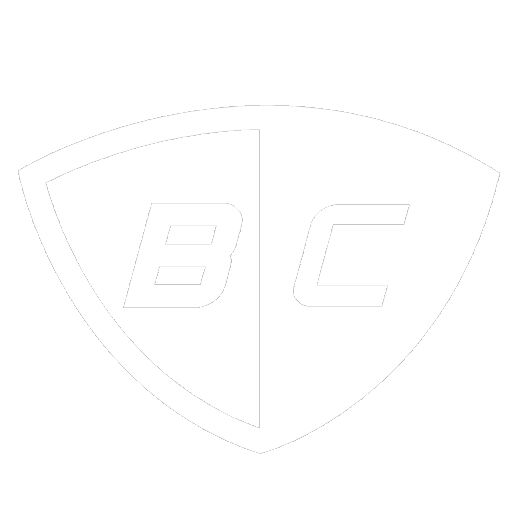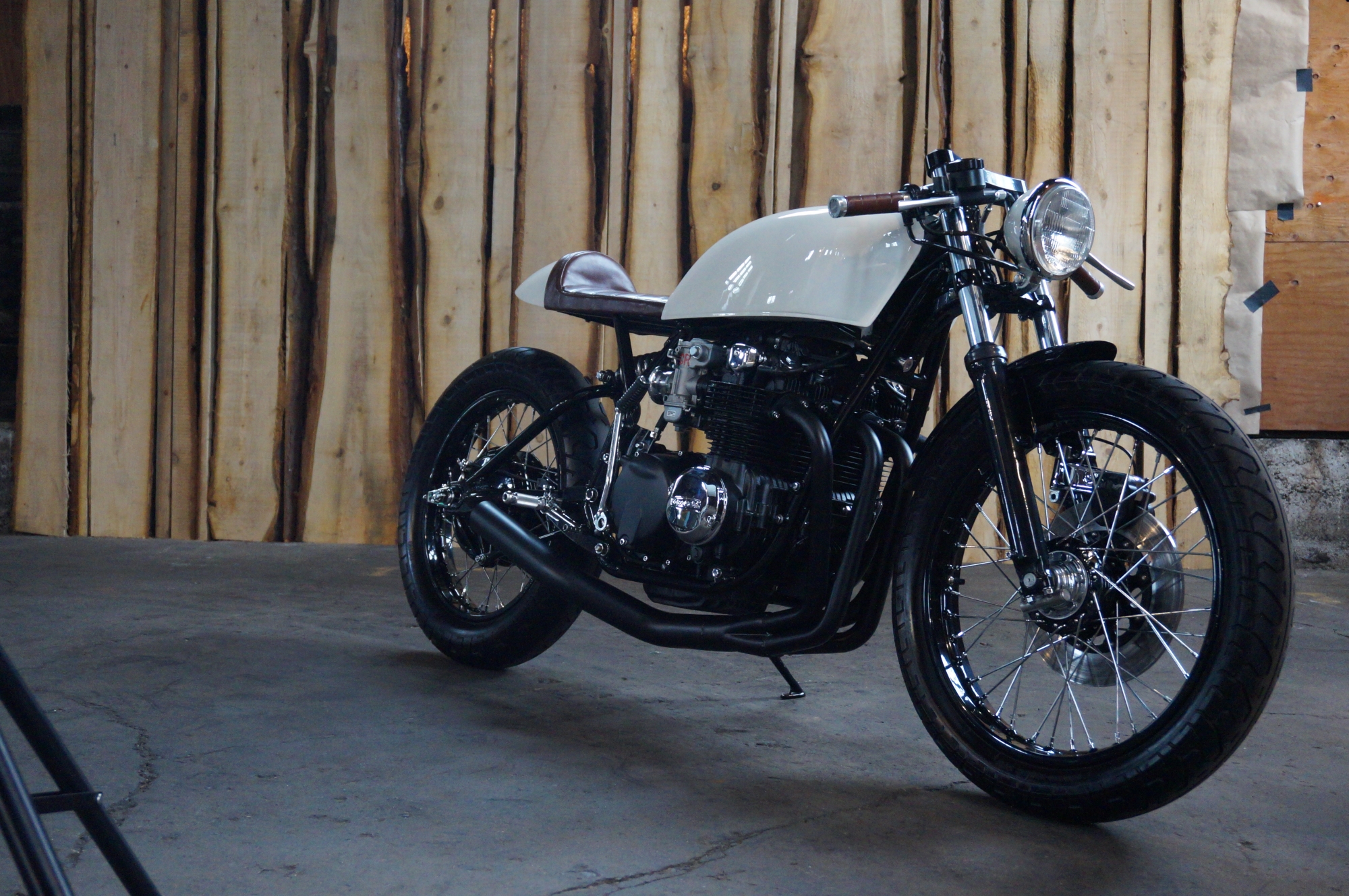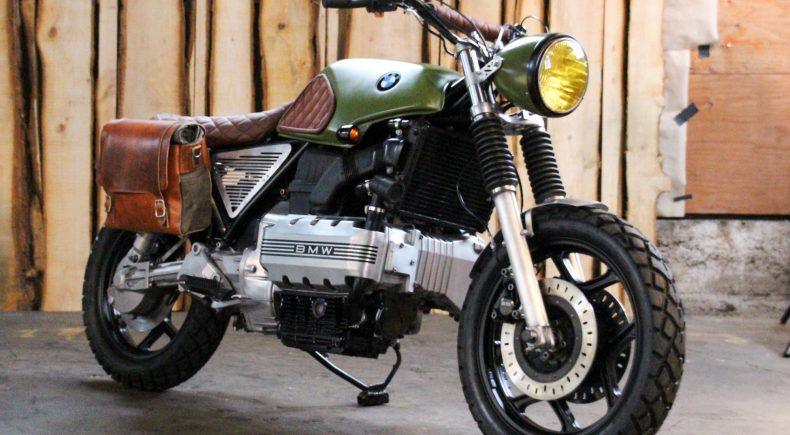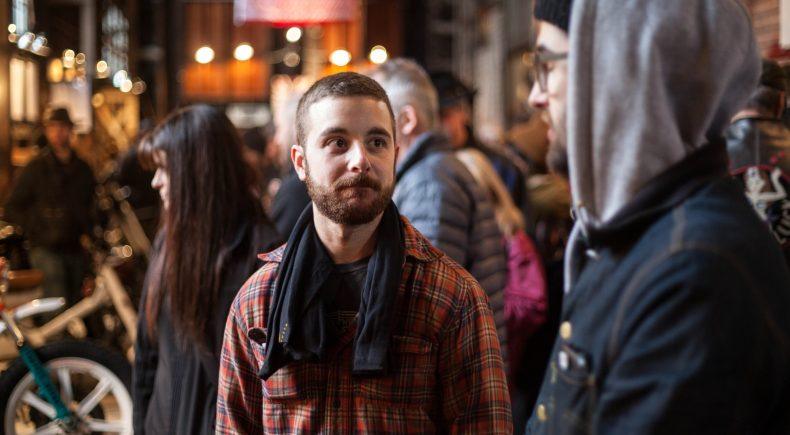Michel Valle is the founder of Alchemy Motorcycles, based out of San Diego, CA. His CB550 cafe racer won the Blue Ribbon Award from Pabst Blue Ribbon at the 2016 One Moto Show.
British Customs: How did Alchemy Motorcycles get started?
Michel Valle: It started out of nowhere. I had built a few old VW bugs, but when my wife and I moved into a condo we didn’t have enough space to work on those anymore. So we bought a CB160 and fixed it up. My brother-in-law really liked how the CB160 turned out, and he asked us to rebuild his RD350. He sent it down to us, and we sent back a cafe racer. One build turned into two, two turned into four. I was a stay-at-home dad, and the only time I had to work on the bikes was between 10PM and 3AM, but I made it happen. I fell in love with building bikes immediately: I’m one of those people who loves the seeing end product. That sense of gratification is huge to me. I built a few more bikes and sold them on eBay, where they did pretty well. That’s when I decided to try to make it more than a hobby, and I got a business license. Over the last four years I’ve been taking baby steps to grow the company.
BC: When did you first start riding?
MV: My family is from Mexico, and we always had dirt bikes and quads we would ride around the ranches. I was always the youngest, and was always asking to ride on back since I never had my own bike. When I turned 18 I was able to buy my own quad, and we would go on these eight or nine hour rides through the desert, beaches, and cities throughout Mexico. I crashed really badly when I was 22 though. We were on an figure-eight track and I was trying to keep up with my cousin, and I went off the track after jumping a triple. A tree caught one of the front tires and twisted the quad around and sent me flying. I landed on my shoulder, broke my collarbone, dislocated everything, and even had a little internal bleeding. I had to stop riding for a while after that. But when I was 28 I started building street bikes, and that got me riding again.
BC: What is the motorcycle community like where you are?
MV: In San Diego, I feel like we don’t have that strong of a community, and that’s what makes me want to go back to Portland all the time. Through Alchemy, I want to help build that community by putting on bike shows and opening an area where people can have a space to come hang out and talk bikes and drink coffee, like they have at See See Motorcycles. I want to create a cultural center for motorcyclists.
BC: What do you believe is the heart and soul of The One Moto Show?
MV: To me, it’s the enthusiasm that everyone brings. It’s not just the audience, but the builders themselves. Everyone has the same enthusiasm and excitement, and you can bring a scooter or a chopper and everyone is excited about it and wants to know everything about it. That atmosphere makes the event. The divide between styles of motorcycles and their respective communities that you get elsewhere isn’t really present at The One Show. There are no competing egos, just excitement.
BC: What is your methodology when you approach a build?
MV: I try to find a theme first. I’m a big fan of vintage race cars — specifically Porsches and Mercedes from the 60s and 70s — which is where I get a lot of my inspiration. And that’s the look I go for if it makes sense with the build. The first thing I do is tear off everything I don’t need, and I imagine what it could become. And then I go from there.
BC: How hard do you think it is to take the first step towards customizing your own bike?
MV: The most difficult thing about customizing a bike is deciding what you want to do to it. Having a vision for the bike is the most important thing. Start little with simple things like seats or handlebars, and then move forward from there.
BC: Where do you think is a good place to start for someone who wants to get into customizing a bike, but doesn’t know where to begin?
MV: Look at other bikes online and start with things they can bolt on and off. That’s the easiest way to get into it. Handlebars are probably the easiest thing to change. It’s so easy to transform a bike by just taking off the back fender and throwing on a cafe seat and handlebars. Instrument clusters are big for me too: I like to strip them down to just a speedometer and a headlight. Try to simplify the bike by getting rid of anything the way like sidecovers and bulky filters. If you want to relocate the battery, that’s a different story. But up until then, it’s easy.








Leave a comment
All comments are moderated before being published.
This site is protected by hCaptcha and the hCaptcha Privacy Policy and Terms of Service apply.